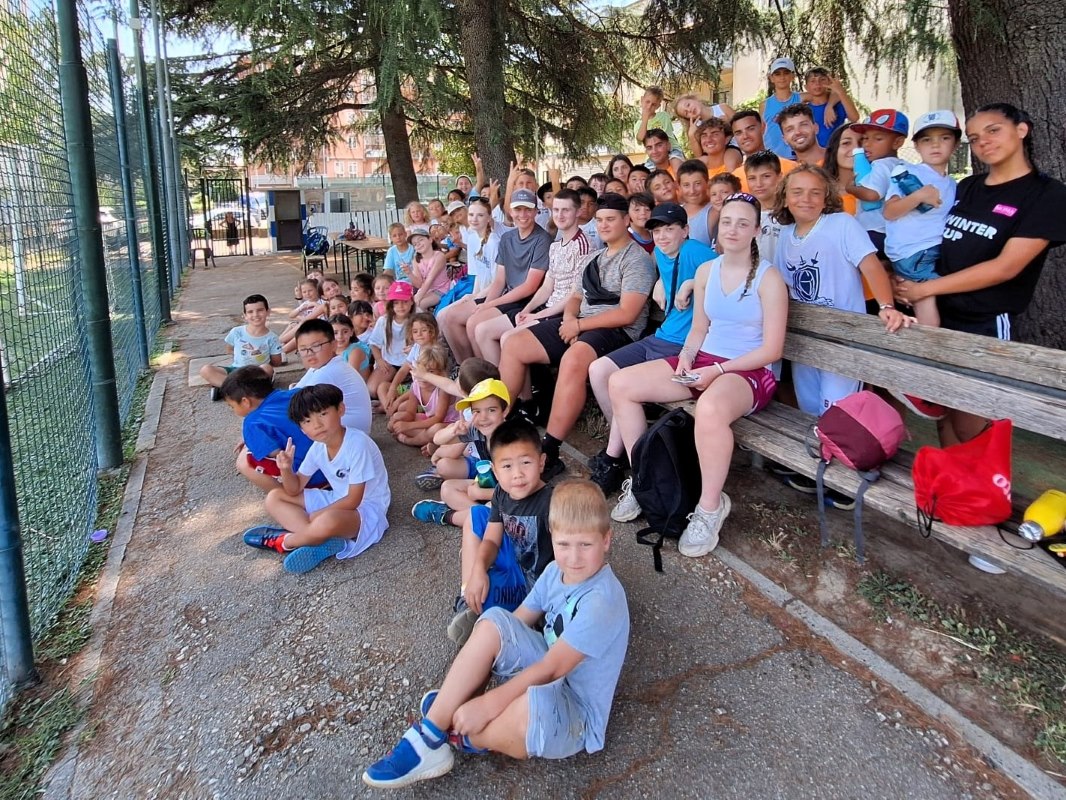Textile care operative

Reference Number: ST0604
Details of standard
The textile care industry encompasses commercial laundry and dry/wet cleaning. Commercial laundries provide laundry services and often product rental, to a wide range of sectors in the UK. This includes work-wear for manufacturing, industrial, food, transport and pharmaceutical sectors; and linen for hospitality, catering, hotel, hospital and care sectors. Dry/wet cleaning is defined as high street aftercare of garments and fabrics using solvents such as perchloroethylene or hydro-carbons (dry) or the relatively new aqueous-based process utilising detergents (wet).
There are over 3,500 textile care businesses in the UK, ranging in size from SMEs to PLCs. The industry employs circa 32,000 employees and is worth in the region of £1billion a year. Textile Care Services Operatives form the majority of employees in the sector and are at the heart of the operation.
Textile Care Services Operatives typical duties include:
- Sorting and identifying incoming product, often using technology, e.g. work-wear, table cloths, sheets, towels, personal items for dry/wet cleaning;
- Ensuring the product is high-quality and fit for purpose;
- Working safely and efficiently, whilst minimising the impact on the environment;
- Rectifying basic faults, e.g. product mis-feed;
- Classifying products for appropriate cleaning process;
- Using appropriate chemicals to undertake the cleaning process, e.g. bleach;
- Operating specialist equipment/machinery to process products in line with standard operating procedures (SOPs), e.g. batch washing machines and presses steamers;
- Drying and finishing products whilst adhering to company quality procedures; and
- Preparing and packing items for dispatch to meet customer requirements.
Textile Care Services Operatives operate in an increasingly high technology based environment. Textile Care Service Operatives report to a Team Leader or Line Manager. They may also interact with Production Managers, General Managers, Engineers, Customer Service Executives, Account Managers, Drivers and customers. Working patterns may include shift work, as much of the sector operates 365 days per year.
Textile Care Service Operatives have core knowledge, skills and behaviours and specialist knowledge and skills in either commercial laundry or dry/wet cleaning.
Typical job titles include: Laundry Operative, Production Operative, Garment Cleaner, Dry Clean Operative, Wet Clean Operative and General Laundry Operative.
|
CORE KNOWLEDGE Textile Care Services Operative know and understand – |
|
|
Industry Background |
The sector history, current role in the economy and future trends. |
|
Company |
Their company services and structure; and their role within it, including employment rights and responsibilities. |
|
Health and Safety |
How the Health and Safety at Work Act applies to their role including areas of legislation specific to noise, chemicals (Control of Substances Hazardous to Health regulations), fire, dust, Working Time Regulations, safety processes, manual handling, safety management, risk assessment and hazard identification in the work area, and working at heights. |
|
Quality Standards |
The quality standards associated with their role including ISO 9001 Quality Management, ISO 14001 Environmental Management, and ISO 18001 Health & Safety. |
|
Environmental Practices |
The impact of sector processes on the environment, the efficient use of resources, recycling, reuse and the safe disposal of all types of waste. |
|
Cleaning Processes |
The chemistry and mechanical function behind the cleaning process to produce a quality product, including stain removal, creasing, colour loss, greying and yellowing, and; impact on different fabric types. |
|
Finishing Processes |
The finishing process and how it impacts on finished product quality and on different fabric types. |
|
Machine Breakdowns and Failure |
How breakdowns, stoppages and failure impacts on production and how to identify, and escalate, potential hazards and issues. Simple machine corrections and adjustments, e.g. speed and temperature on finishing equipment. |
|
Technology and IT |
How IT, technology and systems are used within the sector, the benefits of these and how they can improve production efficiencies and quality, including current and future developments. |
|
CORE SKILLS Textile Care Services Operative can – |
|
|
Communication and Time Management |
Communicate effectively with internal/external customers, colleagues and managers and work as part of a team. Effectively self-manage their time and work load at all times to meet customer service level agreements. |
|
IT and Equipment |
Use IT, technology, systems and equipment, safely and efficiently, in line with SOPs and minimising impact on environment. Complete correct documentation in line with SOPs. Rectify basic faults in equipment, e.g. product mis-feed. |
|
Sorting
|
Sort/classify and identify products for processing, including identifying any special cleaning processes required, e.g. stain removal. Ensure work flow scheduling to meet customer demands. |
|
Washing |
Process items, including any specialist treatment requirements. Ensure washing is prioritised in line with operational demands. |
|
Drying
|
Dry items to achieve the quality of product in a timely manner to fit in with operational demands. |
|
Finishing
|
Finish the product in line with customer quality standards. Quality check the finished products and identify any rejects or rewash. |
|
Sorting / Packing |
Sort and pack items ready for return to the customer. Ensure all products are packed to the correct quantity and type and are packaged according to the customer requirements. |
|
CORE BEHAVIOURS for a Textile Care Services Operative – |
|
· Health and Safety-first attitude with diligent good house-keeping; · Self-motivated to meet operational targets; · Flexible in a fast-moving customer-focussed environment; · Positive and respectful, aware of equality and diversity considerations. |
|
OPTION KNOWLEDGE |
Commercial Laundry Operatives know and understand: |
|
Healthcare Sector |
Decontamination in laundering quality standards, e.g. Risk and Bio-Contamination in the Laundry Environment (British Standard European Norm BS EN 14065), Decontamination of Linen in health and social care (Health Technical Memorandum HTM 01-04) and, BS EN 13795 Surgical drapes, gowns and clean air suits, used as medical devices for patients, clinical staff and equipment. |
|
Food Sector |
Requirements for Risk and Bio-Contamination Control (RABC) and processes required to remove foreign bodies and risk of biological cross-contamination. |
|
Work-wear Sector |
Performance standards of garments including, ISO 20471 High Visibility, ISO 11612 Protection against Heat and Flame, ISO 11611 Protection against welding and allied processes and, BS EN 13034 Protective clothing against liquid chemicals. |
|
Clean Room Sector |
Requirements for Clean Room customers, including control measures for product and people exposure and, BS EN 13795 Surgical drapes, gowns and clean air suits, used as medical devices for patients, clinical staff and equipment. |
|
Continuous Batch Washer (CBW)/Continuous Tunnel Washer (CTW) Health and Safety |
The Textile Services Association (TSA) guidelines on the safe access and entry to a CBW and CTW. |
|
OPTION SKILLS |
Commercial Laundry Operatives can: |
|
Healthcare Sector |
Adhere to laundering quality standards for decontamination, EN 14065 or HTM 01-04. |
|
Food Sector |
Operate to RABC and quality standards required to remove foreign bodies, biological and cross contamination. |
|
Workwear Sector |
Apply quality and safety measures to ensure work-wear garments meet the international standards before delivery to customer. |
|
Clean Room Sector |
Operate within Clean Room customer expectations. |
|
Hospitality Sector |
Adhere to laundering quality standards appropriate for hospitality customers |
|
OPTION KNOWLEDGE |
DRY/WET CLEANING Textile Care Services Operative know and understand: |
|
Care labelling and fibre and fabric identification |
International care label symbols, garment labelling and different types of fibres/fabrics including how they react in the dry cleaning process. |
|
Solvents |
Types of dry cleaning solvents, their safe handling, and compliance with the standards for use, storage and disposal e.g. Registration, Evaluation, Authorisation & Restriction of Chemicals (REACH) and Solvent Emissions Directive (SED). |
|
Spotting / Specialist materials |
Stain classification and the use of chemicals and spotting to remove them with focus on specialist materials (e.g., skins, fur, suede, etc.), including awareness of unique inherent problems. |
|
OPTION SKILLS |
DRY/WET CLEANING Textile Care Services Operative can: |
|
Customer Interaction |
Engage with the customer, assess cleaning options and advise customer, confirming risk level of received item and maintaining effective communication throughout the process |
|
Solvents |
Handle dry cleaning solvents safely, complying to REACH and SED specifications. |
|
Spotting / Specialist materials |
Identify the stain and choose the right chemical and spotting technique to remove it. Adjust the technique dependent on the specialist material, showing awareness of inherent problems. |
|
Receiving Items |
Operate till system and check received goods, advising customer of any faults before they leave premises, resolving or escalating complaints. |
Entry Requirements:
Individual employers will set their own selection criteria.
English/maths:
Apprentices without Level 1 English and maths will need to achieve this level and take the tests for Level 2 prior to taking their end point assessment.
For those with an education, health and care plan or a legacy statement the apprenticeships English and maths minimum requirement is Entry Level 3. British Sign Language qualification is an alternative to English qualifications for those whom this is their primary language.
Level:
2
Duration:
Typically, 12-14 months.
Review:
After 3 years.
Crown copyright © 2017. You may re-use this information (not including logos) free of charge in any format or medium, under the terms of the Open Government Licence. Visit www.nationalarchives.gov.uk/doc/open-government-licence











Responses